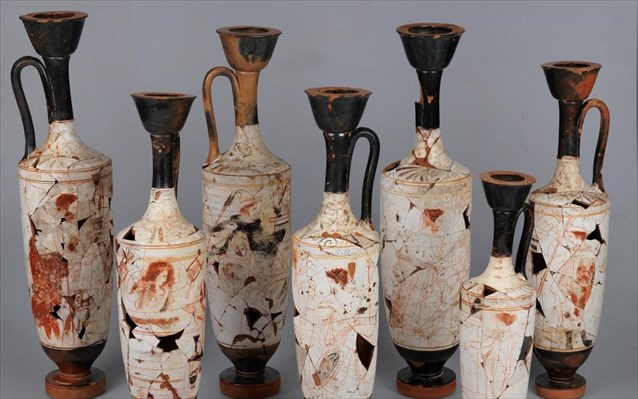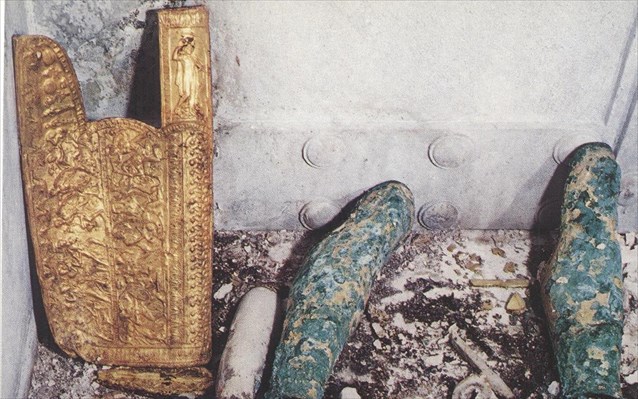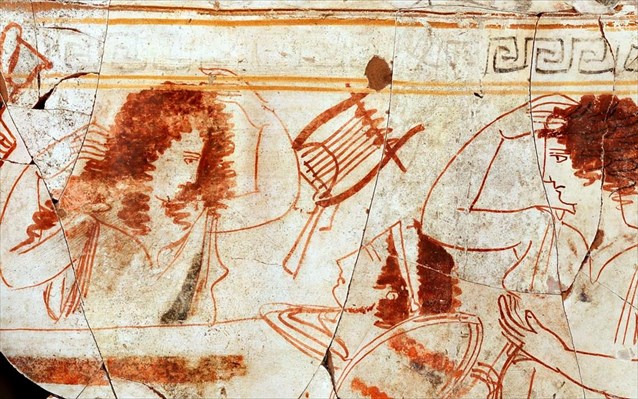The tomb of Philip of Macedonia at Vergina
Scientific conclusions of the 27th Archaeological Symposium in Thessaloniki
"The royal tomb at Vergina belongs to Philip of Macedonia" as stated by Chrisoula Saatsoglou - Paliadeli, head of the university excavations at Vergina, a professor of archaeology at the Aristotle University of Thessaloniki and Member of the European Parliament, 37 years after the monumental discovery of her teacher Manolis Andronikos.
From 2010 to today Chrisoula Saatsoglou - Paliadeli has repeatedly returned to the examination of the skeletal material from Tomb ΙΙ at Vergina, reconsidering the previous studies. She presented a fair amount of scientific evidence in response to the concerns of her Greek and foreign colleagues who had questioned the findings of Manolis Andronikos over the years.

New conclusions
In her report on "Skeletal material from Vergina Royal Tombs", presented at the 27th Symposium of Archaeology in the auditorium of the old Faculty of Philosophy of the Aristotle University of Thessaloniki, Chrisoula Saatsoglou - Paliadeli states, inter alia, "The new data lead to more accurately determining the age of the deceased in the chamber (41-49 years) and detect degenerative changes, chronic diseases and activity indicators that show a middle-aged man, an active rider and an active military man. These data, combined with the morphological changes of the bones, which confirm that the deceased was burned immediately after his death, weaken the theory of identifying him as Philip ΙΙΙ Aridaia."

Some of the gifts in the antechamber, which were put before the marble gate between the antechamber and the chamber. You can see the uneven gold kneepads.
Revising the previous studies
Returning to the study of the skeletal material from Tomb ΙΙ at Vergina is part of a broader interdisciplinary research aimed at the revision of previous studies, with the use of medical, physical and chemical analyses. The goal is to create a database that will be supported by a three-dimensional electronic scanner and provide the Greek and foreign scientific community with the opportunity to explore the sensitive and valuable material without threatening it.
The anthropological study of the two skeletons in the chamber and antechamber of Tomb ΙΙ, which describes 350 bones and fragments, is accompanied by 3,000 colour digital photographs and supported by a computer tomography, electronic microscopy and Χ ray fluorescence (XRF), thanks to which other substances have been detected on the bones, such as crimson and huntite belonging to an object that has been unknown to date.

Funeral mourning, a painting discovered during the excavations of the royal necropolis in Aegae, Vergina
An important conclusion and "bold" scientific hypotheses
According to the head of the university excavations, the most important conclusion of the study lies in the confirmation of the fact, not only from an archaeological, but also from an anthropological point of view, that Tomb ΙΙ at Vergina belongs to Philip of Macedonia and the year of his death was 336 BC.
Meanwhile, within the context of the same symposium, Angeliki Kotaridi, director of the 17th Department of Prehistoric and Classical Monuments presented in her report "bold" scientific hypotheses about the discovery of five new royal tombs, perhaps of members of the dynasty Temenidis, and even of King Cassander himself, or of one of his sons.

A mask of maenad found during the excavations of the royal necropolis in Aegae, Vergina
In his presentation entitled "Reconstruction - revealing the royal necropolis in Aegae. Protection and disclosure of the tombs of Temenidis" Angeliki Kotaridi states that twenty tombs were discovered in total (from 1996 to date), dating back to the Archaic period (the first half of the 6th century BC) to the early Hellenistic period (from the late 4th to the early 3rd century BC).
"Although all tombs were robbed, the presence of remnants of impressive funeral fires with rich gifts (vessels and weapons), and the size and type of the monuments themselves, have led us to associate them with the dynasty of Temenidis," notes Angeliki Kotaridi.